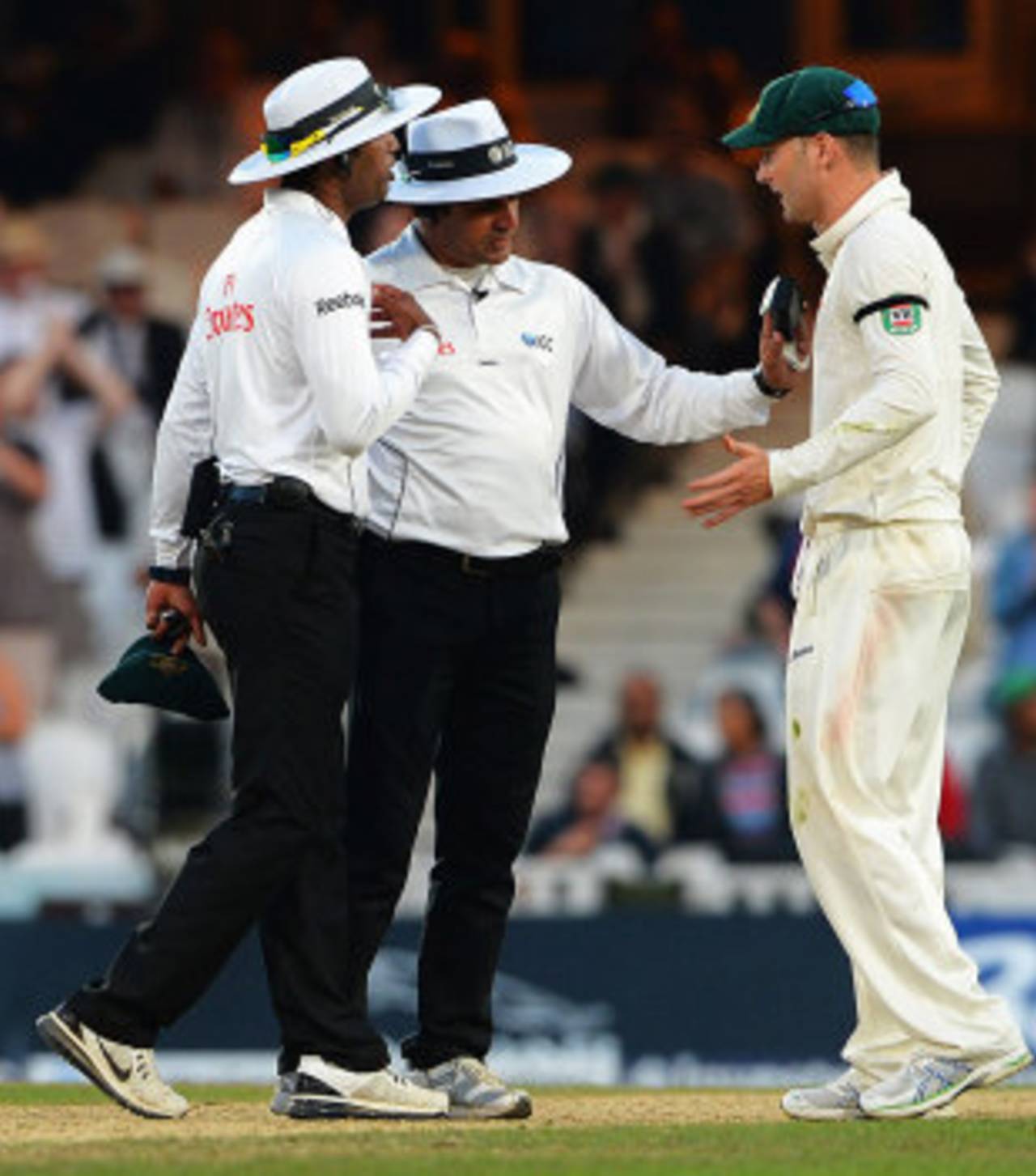Snicko is Hot Spot's insurance policy
Real-time Snicko will be used as a virtual insurance policy for the fallibility of HotSpot as Australia and England submit themselves to experimentation with the latest edition of the DRS during the Ashes series
Daniel Brettig in Brisbane
20-Nov-2013

There were several controversial DRS incidents during the Ashes in England • Getty Images
Real-time Snicko will be used as a virtual insurance policy for the fallibility of Hot Spot as Australia and England submit themselves to experimentation with the latest edition of the DRS during the Ashes series.
The new technology, which provides split screen video synced with stump microphone audio to provide evidence for edges, is only to be used in the event of Hot Spot not revealing a nick, as happened on numerous occasions during the earlier series in England. Several players, including the Australian captain Michael Clarke, have stated their belief that Hot Spot should not be used after its inventor Warren Brennan conceded it would not pick up all edges.
However the ICC, Cricket Australia and the ECB have agreed to the use of Real-time Snicko to increase the circumstantial evidence around the upholding or reversal of decisions. "If the umpire gives it out [and it is reviewed], the third umpire will look at the spin vision replay to start with, then he'll go to Hot Spot," Geoff Allardice, the ICC's head of cricket operations, said in Brisbane. "If there's a mark on Hot Spot he'll go straight to out. That's his conclusive evidence straight away. The only time Snicko will be used is if there's no mark on Hot Spot.
"The consistent message has been that it takes something serious to overturn an on-field decision. You need to walk in to your [fellow umpire] at the end of the day, show him the pictures and say that's why I overturned your decision, and that's probably the toughest audience of all. If you're not sure you stay with the on-field decision."
The Ashes will thus be a testing ground for the use of the technology, with approval of wider use in other series to follow provided its effectiveness is proven. Allardice said a key reason for the approval of Real-time Snicko to be used after years of its parent version's absence from the list of approved technology was that the new system is almost entirely automated, needing only to be calibrated each morning.
"We wouldn't have done it without the support of both boards," Allardice said. "It is part of the evaluation of getting the Snicko on the approved list of technologies, but we've been watching the development of the product for the last 12 months, the fact is it is very different in the way it functions to the previous version of Snicko and it's more automated and it's faster, so the images should be available within seconds rather than minutes.
"We need to look at it in a match situation somewhere, and we've got two boards who are very keen and the ICC to improve the DRS, and the area we need to find what works better is with edges. We feel this is something that can certainly help the umpires - to get a tool to assist them with the timing of the sound is an advantage.
"There's no manual judgments the operator has to make on a ball-by-ball basis. That's set at the start of the day and maintained. Can we guarantee it's going to be absolutely perfect? Probably not, there is always a human operating the system, as with all the technology we're using, but we're minimising things going wrong."
Allardice foreshadowed further changes to the DRS in future, including the broadcast of the umpires' deliberations over video evidence to the public, as is the case in rugby league and union. "It's certainly something that's on the cards," he said. "We won't be doing it this series, but I think one of the medium term goals is to try to get the guys communicating in a more disciplined language.
"That's one of the things that's impressive about the rugby guys is they run up and down the field and yet they can still communicate very clearly to each other and actually enhance the understanding of what's going on. In time we'll be doing that, start with some of the better third umpires and the ones who can adapt to that the easiest, but something we're looking at in the medium term."
Daniel Brettig is an assistant editor at ESPNcricinfo. He tweets here